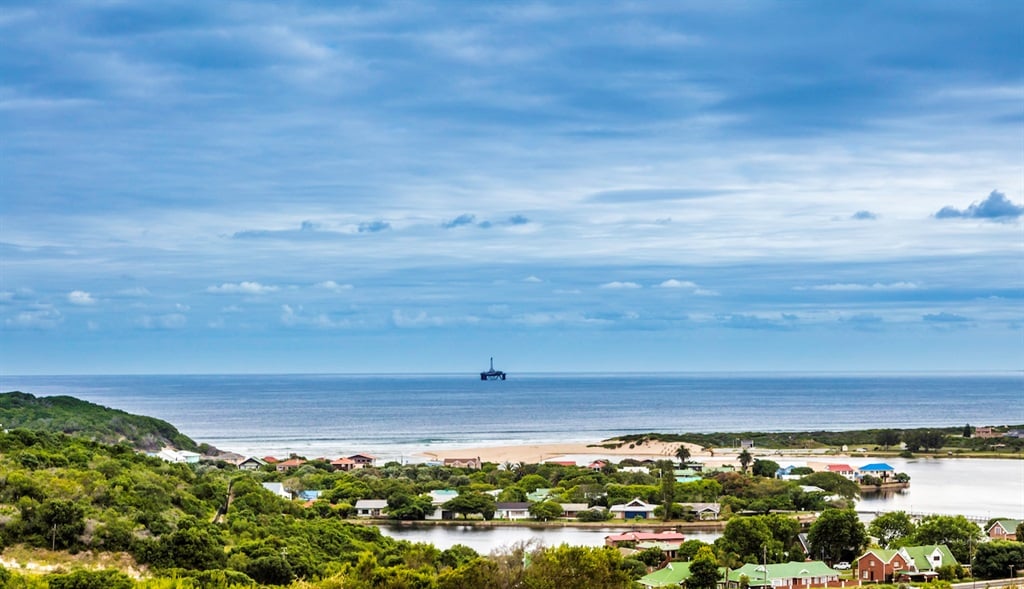News
PetroSA says it can make fuel for a third of SA’s cars at Mossel Bay – with some foreign help

An oil rig visible over the meeting of the Hartenbos river and the sea, near Mossel Bay. (Getty)
- PetroSA is trying to figure out what to do with its mothballed refinery at Mossel Bay.
- It is looking for partners with oil, or money, or preferably both plus the backing of a nation state.
- Under one of its scenarios, its operation could produce enough fuel for a third of SA needs.
- The refinery shut down in 2020 for lack of raw oil and gas, and massive new gas fields are not expected to be online for some time.
- For more stories, go to www.BusinessInsider.co.za.
In a best-case scenario, Mossel Bay could become a major supplier of fuel in South Africa, producing enough petrol and diesel for around a third of SA’s cars, data from a request for proposal by PetroSA shows.
That would see the state-owned company’s now-mothballed refinery there rival the output of Sasol, which was the last local producer of liquid fuels left standing as other refineries shut down – raising fears of serious economic disruption should anything go wrong with imports.
PetroSA is currently looking for partners to help it use the Mossel Bay plant, which halted production in 2020.
It believes its refinery will have gas to work with again in by 2028, but wants to put the plant to work in the meanwhile.
Under one scenario, the refinery would handle imported crude oil at a rate of 200,000 barrels per day. But that is at the very top end of the company’s ambitions; it has also sketched out scenarios – requiring far less capital investment – that would make for an output as low as 7,500 barrels per day, just about 1% of what South Africa needs daily.
South Africa burns through some 600,000 barrels worth of fuel per day, though the exact level is highly dependent on whether Eskom has money for diesel at any given time.
Getting the refinery back up and running will not be a simple process, PetroSA has warned potential partners. Even so, it hopes to see production started again soon.
At the top of PetroSA’s partner wish list is a state-owned, or at least “state supported”, company with its own oil or gas and its own cash to pump into South Africa. But it is willing to talk to anyone who can bring at least $2.5 million (around R43 million) to the table, or who can raise $150 million.
It is also keen for partners who can get to work this year, with considerably less interest in those who can only get production up and running after 2025.
Companies that have shown a growing appetite for involvement in offshore oil and gas in South Africa include the European multinational TotalEnergies, and the state-owned QatarEnergy, both of which could easily fund the top tier of PetroSA’s ambitions.
Oil and gas worth exploiting was first confirmed off Mossel Bay in the 1980s, at a time when sanction-hit South Africa was desperate to reduce reliance on imported fuel at just about any cost. But production from the gas-to-liquid plant only started producing petrol and diesel in 1992, not long before those sanctions were lifted, opening up the import of comparatively cheap oil and gas.
The Mossel Bay facility was built to produce 36,000 barrels of fuel per day, using a combination of local gas and imported feedstock.
“Additional reserves have been brought into production since the original commissioning of the facilities in the 1990’s, but these have now largely been depleted over the years of operation, and without further development of indigenous gas production or alternative feedstock strategies, the facility has run out of gas feed,” PetroSA has told potential partners.
PetroSA is willing to hand over equity to a partner, or to enter into a profit-sharing or contract-production deal.
South Africa’s energy roadmap calls for the use of massive offshore gas fields to fuel a significant portion of its total energy needs for decades to come, despite the increasing global pressure to move away from fossil fuel use.
